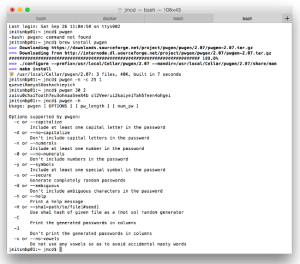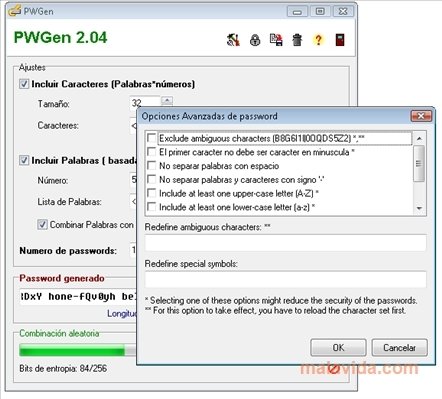

#Pwgen 2015 install#
You can install the latest stable release of the perl module and terminal command via CPAN: sudo cpan Crypt::HSXKPasswd
#Pwgen 2015 driver#
Some architectures build but most are failing with the above error.Īm I doing something wrong? Am I maybe missing a kernel module? How can I further debug the driver error?
#Pwgen 2015 password#
Using a strong password lowers the overall risk of a security breach, and its strength is a measure of the effectiveness against guessing or brute-force attacks. I have tried various workspace sizes, toggling fp16/fp32, and various network architectures. Meet Generate Password and Number, a simple online tool that does exactly what it says generates strong passwords and random numbers quickly and easily. dd if/dev/random bs32 count1 2> /dev/null md5sum cut -b 10-20 Should give you about 40 bit entropy/security. Nvinfer1::ICudaEngine* nvengine = nvbuilder->buildEngineWithConfig(*nvnetwork, *config) Nvinfer1::IBuilderConfig* config = nvbuilder->createBuilderConfig() Ĭonfig->setFlags(1U setMaxWorkspaceSize(1 setProfilingVerbosity(nvinfer1::ProfilingVerbosity::kVERBOSE)

Nvparser->parseFromFile(onnxFilename.c_str(), 0) To install pwgen in DEB based systems, run: sudo apt install pwgen. It is available in the most Unix-like operating systems.

It designs secure passwords that can be easily memorized by humans. Nvonnxparser::IParser* nvparser = nvonnxparser::createParser(*nvnetwork, logger) pwgen is simple, yet useful command line utility to generate a random and strong password in seconds. Nvinfer1::INetworkDefinition* nvnetwork = nvbuilder->createNetworkV2(1U setMaxBatchSize(2)
#Pwgen 2015 code#
Here is the code I’m using to build the engine: nvinfer1::IBuilder* nvbuilder = nvinfer1::createInferBuilder(logger) There is nothing else in the logs except normal timing info showing the fastest tactics. Graph construction and optimization completes successfully, but after a few minutes of autotuning the program crashes with this error: terminate called after throwing an instance of 'pwgen::PwgenException' However when I call buildEngineWithConfig() I am encountering an error. It executes in Tensorflow and exports to ONNX format without issue. The network contains 3d convolutions, 2d convolutions, residual connections, dropout, and elu activations. I am currently attempting to build a cuda engine from a network in ONXX format and need some help.


 0 kommentar(er)
0 kommentar(er)
